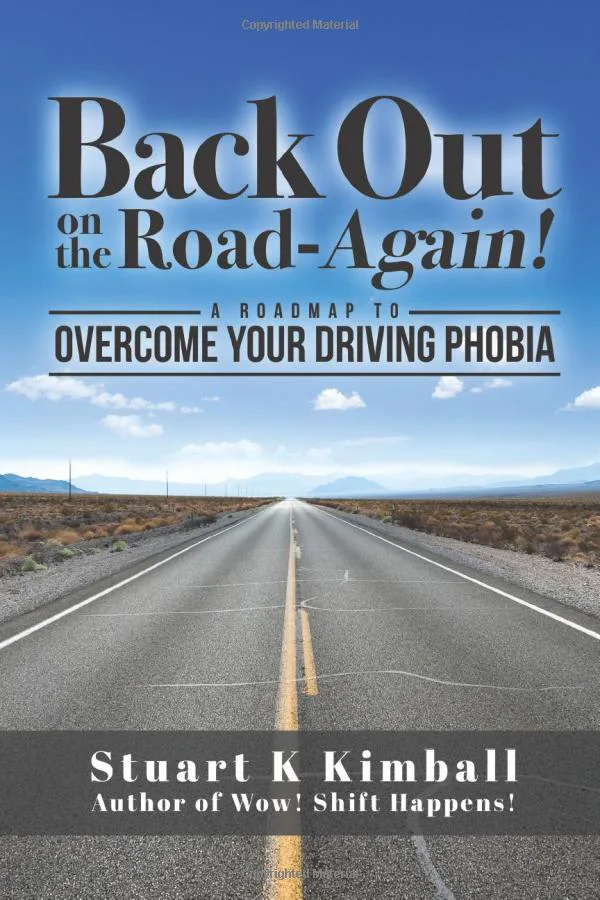Amaxophobia, a persistent and overwhelming fear of driving, is a specific phobia that affects countless individuals worldwide. In this comprehensive guide, we delve into the complexities of Amaxophobia, exploring its causes, symptoms, and various treatment options to help individuals regain their confidence and independence on the road.
1. Understanding Amaxophobia
Countless people worldwide grapple with Amaxophobia, a specific phobia that manifests as an overwhelming fear of driving. Hindered in numerous aspects of life, these individuals face challenges when traveling, commuting, and engaging in social activities. Here, we delve into the complexities of Amaxophobia, highlighting its causes, symptoms, diagnosis, and various treatment options.
2. Identifying Amaxophobia Causes
A myriad of factors contributes to Amaxophobia, such as:
- Past trauma: Car accidents or near-miss experiences may instigate this fear.
- Control concerns: Anxiety over vehicle control, particularly in high-traffic or high-speed situations.
- Uncertainty: Inexperienced drivers or those with long driving gaps may develop Amaxophobia due to fear of the unknown.
- Genetic factors: A family history of anxiety disorders or phobias may predispose individuals to Amaxophobia.
Discover the path to a healthier brain with our handpicked selection of the 10 best brain-training games for 2023 that will captivate, entertain, and enhance your mental well-being!
3. Recognizing Amaxophobia Symptoms
People living with Amaxophobia may exhibit the following:
- Panic attacks: Intense fear, rapid heartbeat, sweating, or shortness of breath.
- Avoidance behaviors: Deliberate evasion of driving scenarios, including highway avoidance or refusal to drive.
- Physical manifestations: Nausea, dizziness, trembling, or chest pain when confronted with driving.
- Persistent negativity: Continual worries about accidents or fatalities related to driving.
4. The Diagnostic Process
To diagnose Amaxophobia, a qualified mental health professional evaluates symptoms, medical history, and the phobia’s impact on daily life. The Diagnostic and Statistical Manual of Mental Disorders (DSM-5) offers specific phobia diagnostic criteria to corroborate this diagnosis.

5. Overcoming Amaxophobia: Strategies and Treatments
Many approaches exist to conquer Amaxophobia, from self-help strategies to professional interventions.
Self-guided Techniques
- Knowledge: Familiarize yourself with driving safety, rules, and best practices to mitigate anxiety.
- Cumulative exposure: Start in low-stress environments like quiet neighborhoods before tackling more challenging driving situations.
- Relaxation: Employ deep breathing, progressive muscle relaxation, or mindfulness to manage stress while driving.
Expert Interventions
- Cognitive-behavioral therapy (CBT): This evidence-based treatment targets irrational thoughts and beliefs related to driving, fostering adaptive coping strategies.
- Exposure therapy: The repeated confrontation of the driving fear reduces anxiety.
- Pharmacological treatments: Anti-anxiety medications or antidepressants may alleviate amaxophobia symptoms and enhance daily functioning.
- Driving lessons: Collaborating with a patient, experienced driving instructor bolsters confidence and safe driving abilities.
- Support groups: Engaging with fellow driving-anxious individuals offers a platform for shared experiences, coping strategies, and encouragement.

Back Out on the Road Again by Stuart K. Kimball
A Roadmap to Overcome Life’s Obstacles is an inspiring and insightful self-help book that guides those who find themselves lost in life’s labyrinth. This comprehensive review will illuminate why this book has become a must-read for anyone seeking personal growth by thoroughly examining the book’s features, customer reviews, and the author’s intentions.
“Back Out on the Road Again” is an engaging and heartfelt guide that aims to empower readers to overcome their obstacles and live a life of fulfillment. The author’s unique approach combines personal anecdotes, practical advice, and actionable steps to help readers find their way through the maze of life. This thought-provoking book is a powerful tool for anyone who feels stuck or overwhelmed and is looking for a path to rediscover their true self.
6. Embracing the Journey
Amaxophobia’s impact on an individual’s life is profound. By understanding its intricacies and pursuing appropriate treatments, individuals can reclaim their independence and self-assurance on the road. Through self-guided techniques and expert interventions, Amaxophobia can be conquered, paving the way for a more fulfilling, unencumbered life.
7. Conclusion
Amaxophobia, often known as the crippling fear of driving, can drastically disrupt an individual’s day-to-day life and limit their ability to participate in various activities. Individuals are given the ability to confront this fear head-on by gaining a more in-depth awareness of its sources, symptoms, and therapies that are currently accessible. Those affected by emetophobia can reclaim their self-assurance and independence on the road by employing tactics for self-help and, when required, seeking the advice of a professional.
FAQ

Amaxophobia is a specific phobia in which a person has a strong and long-lasting fear of driving.
Past traumatic events, fear of losing control, fear of the unknown, and a genetic tendency toward anxiety disorders or phobias are all things that can cause Amaxophobia.
Common symptoms include panic attacks, avoiding driving, physical symptoms (like feeling sick or dizzy), and negative thoughts about driving that don’t go away.
A qualified mental health professional diagnoses amaxophobia by evaluating symptoms, medical history, and the impact of the fear on daily life, using the Diagnostic and Statistical Manual of Mental Disorders (DSM-5) criteria.
Treatment options include self-guided techniques (education, gradual exposure, relaxation techniques) and expert interventions (cognitive-behavioral therapy, pharmacological treatments, driving lessons, and support groups).

